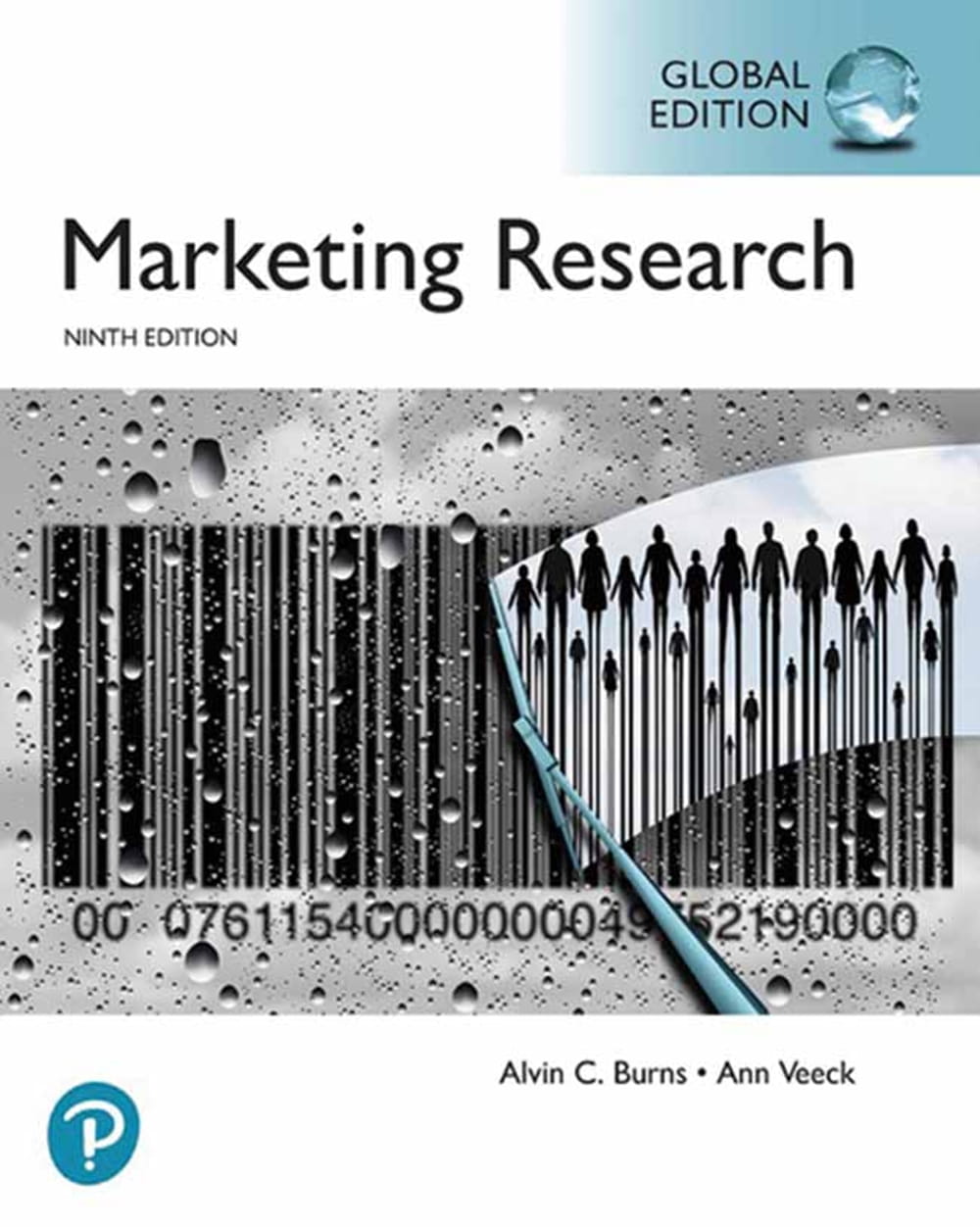- 定價93.00元
-
8
折優惠:HK$74.4

|
|
|
|
MARKETING RESEARCH 9/E (GE)?
|

|

沒有庫存
訂購需時10-14天
|
|
|
|

|
|
9781292318042 | |
|

|
|
BURNS,VEECK | |
|

|
|
全華圖書 | |
|

|
|
2021年3月08日
| |
|

|
|
413.00 元
| |
|

|
|
HK$ 392.35
|
|
|
|
|

| |
|
|
|
|
| |
|
|
詳
細
資
料
|
ISBN:9781292318042叢書系列:大學商管規格:平裝 / 528頁 / 26 x 38 x 2.64 cm / 普通級 / 全彩印刷 / 初版出版地:台灣
大學商管
|
|
分
類
|
專業/教科書/政府出版品 > 管理類 > 行銷 > 行銷研究 |
同
類
書
推
薦
|
|
|
內
容
簡
介
|
For courses in global marketing.
A conceptual approach and introduction to the field of marketing research
Written with an emphasis on the practical application of marketing research methods, Marketing Research teaches the basic fundamental statistical techniques needed to analyse market data. The 9th Edition has been updated to offer the most current insights on forces shaping marketing research, including the widespread adoption of infographics, a pronounced shift toward mobile marketing research, and the impact of big data. Additionally, an updated and integrated case study throughout the text helps students relate the material to the real world -- and their future careers.
本書特色
Current marketing research topics covered through examples and application
· Coverage of emerging trends and technologies shaping contemporary marketing research practice, including panel companies, data visualization, infographics, dashboards, qualitative and mobile developments, and the notion of “insights,” is included.
· Data coverage, including packaged data with Nielsen panel data and point-of-sales data, and the impact of Big Data is explored.
· Marketing Research Insights illustrations and descriptions reflect new and current issues and practices in the industry within four essential categories: practical applications, digital marketing research, ethical considerations, and global applications.
· Active Learning Exercises, included at strategic points in each chapter, ask students to apply recently learned concepts. Revised exercises include how-to instructions for using Google Analytics to track user behavior, and creating an infographic with Microsoft PowerPoint.
· YouTube examples provide students with visual perspectives on and insights into the industry.
· Synthesize Your Learning challenges help students integrate material learned across chapters.
Applications and software designed to solve teaching and learning challenges
· Chapter-Opening Vignettes with contemporary marketing research company descriptions give students a more academic and realistic perspective of marketing research.
· Full integration with IBM SPSS 25.0 teaches students how to use the latest version of SPSS, a gold industry standard tool in marketing research.
· An Auto Concepts case study (with integrated dataset) carried throughout the book connects core concepts from every chapter, demonstrating how students can formulate problems and analyze data. By reading about a manager who has to determine the kinds of automobiles the market will demand in the future, students learn how to examine attitudes and opinions that might influence consumer choice, determine the best models, and identify market segment differences between different models.
· End-of-Chapter Cases help students relate the material to the real world. Two of the new case studies in this edition involve analyses of searchable Nielsen data: one with consumer panel data (Chapter 4) and one with point-of-sale (scanner) data (Chapter 5).
· End-of-Chapter Job Skills Learned spells out how the information learned in each chapter can be applied in the workplace. These skills are listed under the headings of: communication, critical thinking, knowledge application and analysis, information technology and computing skills, data literacy, and ethics.
|
|
目
錄
|
1. Introduction to Marketing Research
2. The Marketing Research Industry
3. The Marketing Research Process and Defining the Problem and Research Objectives
4. Research Design
5. Secondary Data and Packaged Information
6. Qualitative Research Techniques
7. Evaluating Survey Data Collection Methods
8. Understanding Measurement, Developing Questions, and Designing the Questionnaire
9. Selecting the Sample
10. Determining the Size of a Sample
11. Dealing with Field Work and Data Quality Issues
12. Using Descriptive Analysis, Performing Population Estimates, and Testing Hypotheses
13. Implementing Basic Differences Tests
14. Making Use of Associations Tests
15. Understanding Regression Analysis Basics
16. Communicating Insights
|
|
|
書
評
|
|
|
|
|

